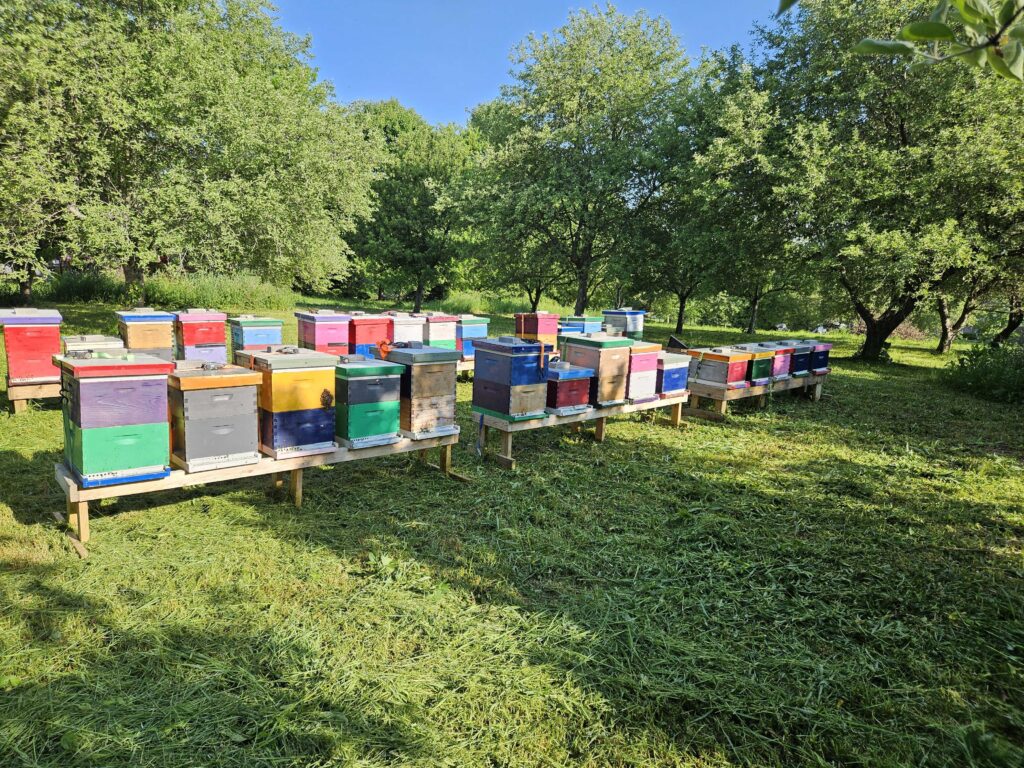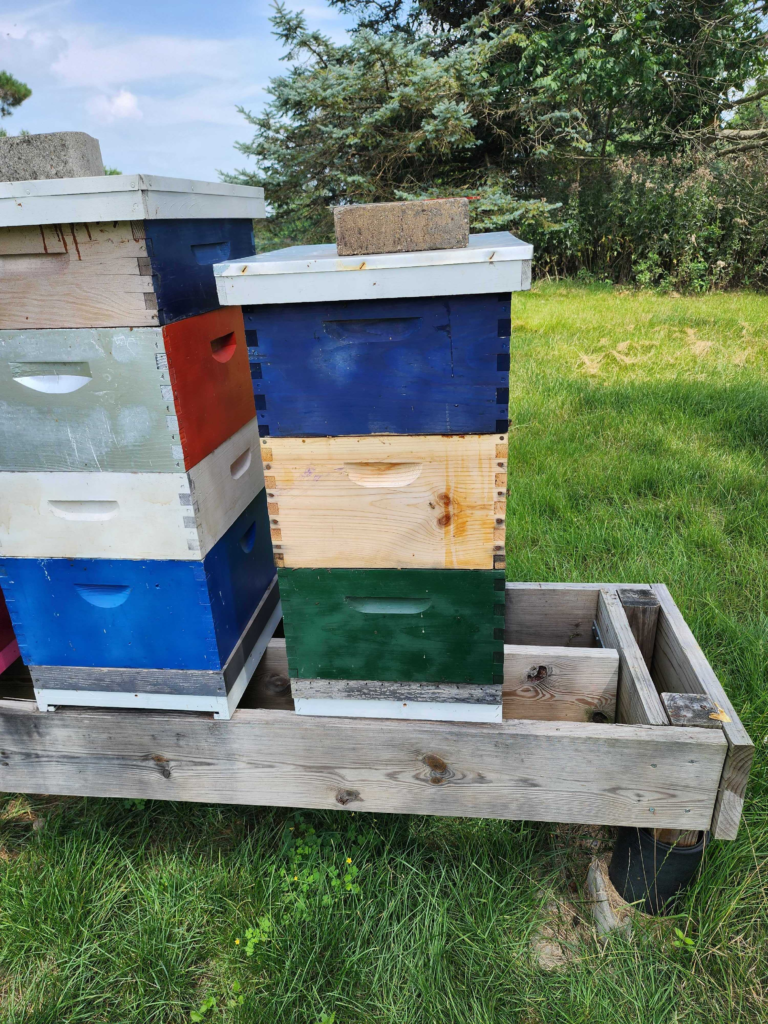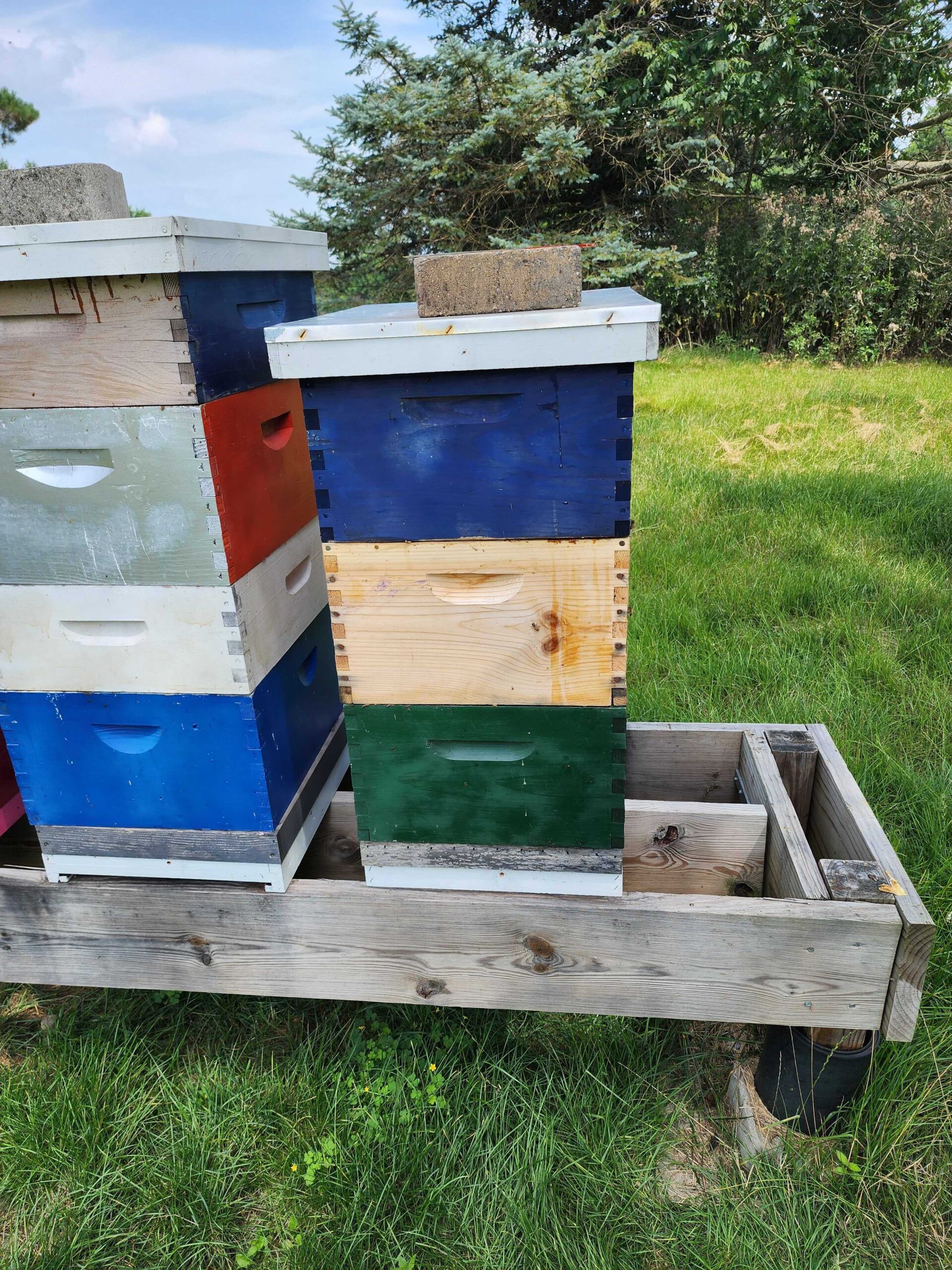As a beekeeper, one of the crucial decisions you’ll face is determining the configuration of your hive. The debate between a double deep and triple deep setup is a hive of activity in the beekeeping community, each option having its own merits. Let’s delve into the differences between these setups to help you make an informed decision for your buzzing buddies.
Understanding the Basics
Double Deep Beehive Setup:
In a double deep hive, you have two deep hive bodies stacked on top of each other. This provides a substantial amount of space for brood rearing and honey storage. It’s a popular choice among beekeepers who prefer a manageable hive size while still ensuring a thriving bee colony.
A row of double deep beehives typically looks like this (straight from our own apiaries):

In this photo you can see our hives that are progressing from single deeps into double deeps, these hives are located in the middle of a 50 acre apple orchard – it doesnt get much better than that for Spring honey! You may notice some bees on the outside of the yellow and blue double, some of these hives were moved to this location early in the morning so the bees are still getting into their homes.
The benefits to running a double deep setup is that it’s the most common way of doing it, you will find people who understand the challenges you’re facing more easily and it’s a lot less lifting when you go to put medium/small honey supers on top.
A deep hive box filled with honey can weigh between 75 and 100 lbs depending on how the frames are setup – that’s a lot to lift!
Triple Deep Setup:
A triple deep setup takes it a step further by adding a third deep hive body. This offers even more space for expansion, brood development, and honey storage. Beekeepers who opt for a triple deep setup often have large colonies or live in regions with extended nectar flows or live in colder climates and want the extra honey insulation.
We do run triple deeps in our Ohio apiaries, here is an example:

As you can see here, the hive on the right is a true triple deep setup. This hive is absolutely huge when you go in for an inspection, but it’s also extremely healthy. As a side note, the hive to the next of it is also a triple deep but we are using the health and strength of that hive to quickly draw out some medium frames that we can use on a different hive somewhere else.
You might also notice in this picture that our stands are placed into painter buckets. We fill these buckets with vegetable oil – it prevents ants and small hive beetles from being able to crawl up and in the hives.
Key Differences:
1. Colony Size and Strength:
- Double Deep: Well-suited for moderate to strong colonies, providing ample space for brood and honey storage without the added complexity of a third box.
- Triple Deep: Ideal for large, robust colonies that require extra room for expansion. It accommodates a larger bee population and promotes a thriving hive.
2. Resource Management:
- Double Deep: Requires less maintenance and resources compared to a triple deep setup. It strikes a balance between hive strength and ease of management.
- Triple Deep: Demands more attention and resources due to the increased hive size. Beekeepers should closely monitor colony health, food stores, and potential swarming.
3. Regional Considerations:
- Double Deep: Commonly used in regions with shorter nectar flows or milder climates where a massive hive might not be necessary.
- Triple Deep: Suitable for areas with abundant nectar flows, ensuring the hive has sufficient space to store surplus honey during peak seasons.
Making the Choice:
Ultimately, the decision between a double deep and triple deep setup depends on your specific beekeeping goals, the local climate, and the characteristics of your bee colony. Consider factors such as colony size, resource availability, and the level of involvement you want in hive management.
Before making your decision, you can always give us a call. We’re here to help you succeed in your quest to become a bee keeper. A lot of people selling bees and equipment dont mind if you fail, because you go back to buy more. We would prefer you only come to us when you want to expand – not because something has gone wrong.
In the end, whether you opt for the simplicity of a double deep or the expansiveness of a triple deep, the key is to create an environment that allows your bee colony to thrive. Happy beekeeping!
Ready to explore and discuss beekeeping setups? Join the conversation on West River Exchange here!

